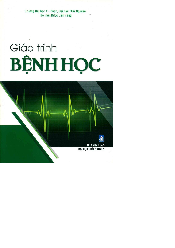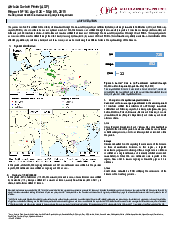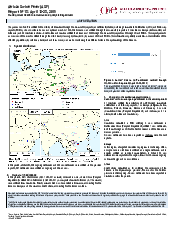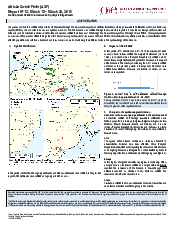

Preview text:
African Swine Fever (ASF)
Report N°17: 2016 – 201 9
World Animal Health Information Department
GLOBAL SITUATION OF ASF
This reports presents an historical overview on the situation of ASF. The ASF events reported to the OIE by its Members
through the World Animal Health Information System, WAHIS from 2016 to 2019 (up to May 20) were included; as since 2016,
a pattern of significant increase in the amount of outbreaks was identified. The disease is present in the African, European,
and most recently, the Asian continent. It has never been reported in Oceania, and it was eradicated in the Americas in the
‘90s1. Since 2016, 24% of the reporting countries and territories (48/200) have reported the disease as present2. In Europe,
the disease occurred for the first time in: Moldova in September 2016, then in June 2017 in Czech Republic, followed by
Romania in July 2017 and more recently in Hungary, and Bulgaria, in April and August 2018 respectively. A recurrence of the
disease in wild boars has been reported in Belgium in September 2018 (last event occurred and was resolved in 1985). In
Asia, the disease was reported for the first time in China (People’s Republic of) in August 2018, in Mongolia in January 2019,
then in Vietnam in February 2019, in Cambodia in March 2019, and in Hong Kong (SAR-PRC) in May 2019.
The distribution of the disease since 2016 is illustrated in Figure 1.
Figure 1. Global situation of ASF (2016-2018) (People’s African Swine Fever (ASF)
Report N°1: 2016 – 20 9 1
World Animal Health Information Department
The global impact of ASF by region is displayed in Table 1. ASF is present in domestic pigs and wild boars in Europe3, while
Asia and Africa have notified outbreaks in domestic pigs mainly, and few cases in wild boar (300 cases reported in Asia since
August 2018). During this period, Europe accounted for the majority of outbreaks with 96% (9 756) of all outbreaks, but the
highest impact in terms of animal losses was reported in Asia (1 711 677 animals lost, which is 68% of the total global reported losses in this period). Swine Wild boar Total Total Total Total Region Outbreak Susceptibl Case Outbreaks Susceptible Cases Losses Outbreaks Susceptible Cases Losses** Losses** s e s Africa 63 83 566 16 252 42 048 0 63 83 566 16 252 42 048 Asia 389 1 826 402 23 158 1 711 677 3 NA* 300 392 1 826 402 23 458 1 711 677 15 Europe 1964 1 063 738 364 321 777 244 7 792 NA* 9 756 1 063 738 380 255 777 244 934 16 Total 2416 2 973 706 403 731 2 530 969 7 795 NA NA 10 211 2 973 706 419 965 2 530 969 234
Table 1. Impact of ASF by region based on the information submitted
through the Early Warning System (2016-2019). * NA: Not applicable. *
* The impact of this disease is measured in terms of losses, which are calculated by the sum of dead and cul ed animals from the infected farm or backyard
premises of the reported outbreak. Conclusion
The global pattern of distribution of ASF in this period reveals a serious deterioration due to the spread of the disease, mainly
in Europe, and in Asia, after the first occurrence in China (People’s Republic of) in 2018. In this context, the work of GF-TADs2
Global Steering Committee in empowering regional alliances in the fight against transboundary animal diseases (TADs), in
providing capacity building and in assisting the countries establishing programmes for the prevention, preparedness and
control is of pivotal importance for the control and eradication of the disease at global level.
Member countries are reminded that the OIE Terrestrial Animal Health Code provides comprehensive guidance to veterinary
authorities for establishing a country, zone and compartment free of African swine fever (ASF) as well as recommendations
relating to the trade of pork and pork products. These products when, handled in accordance with hygienic practices complying
with international standards, are not a source of infection.
The OIE also encourages Member countries to implement enhanced national sanitary measures on waste disposal from
aircrafts/vessels/passengers and enhanced on-farm biosecurity measures – including the protection of pigs from untreated
swill feeding and the effective separation between domestic pigs and wild boar – and stresses the importance of OIE
international standards for risk management of transboundary animal diseases (TADs) to reduce the risk of exporting disease to trading partners. 3



